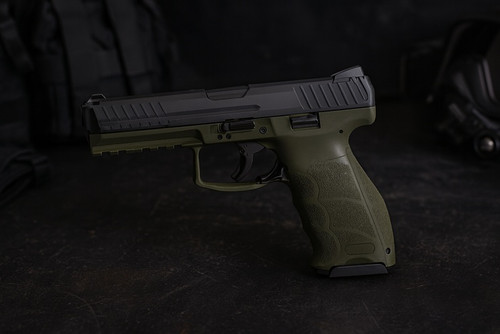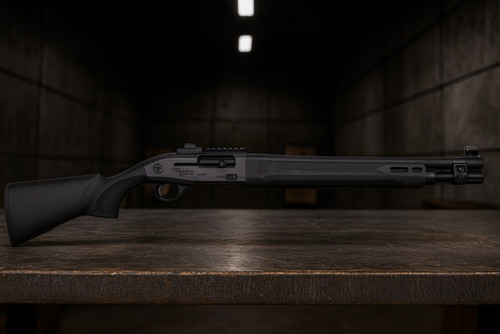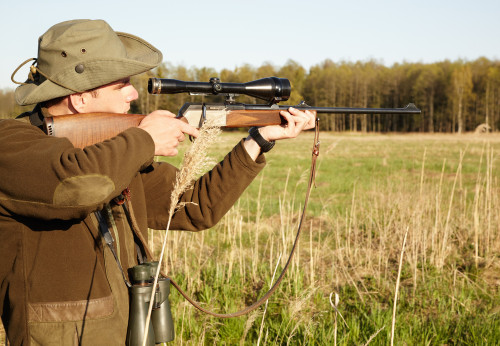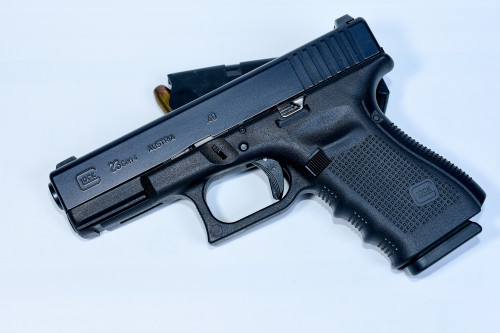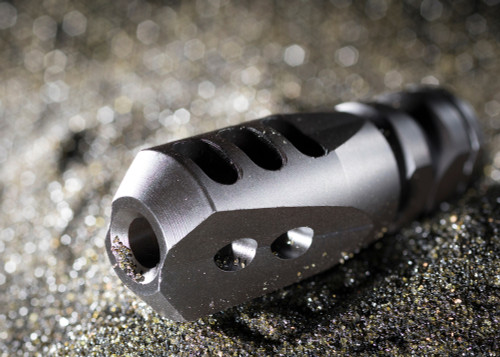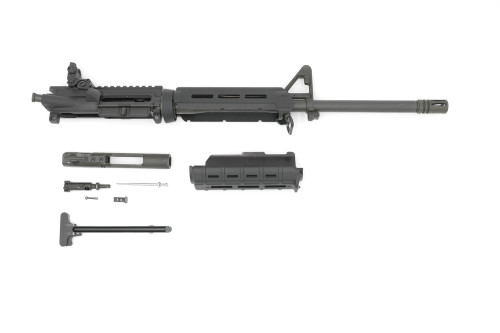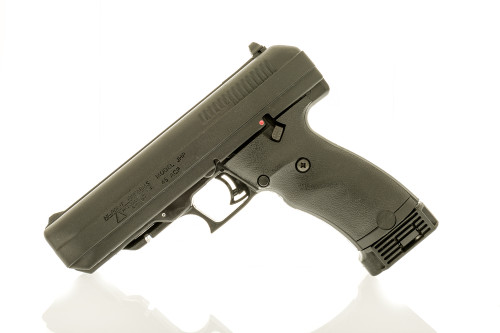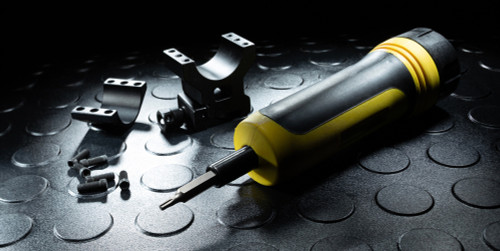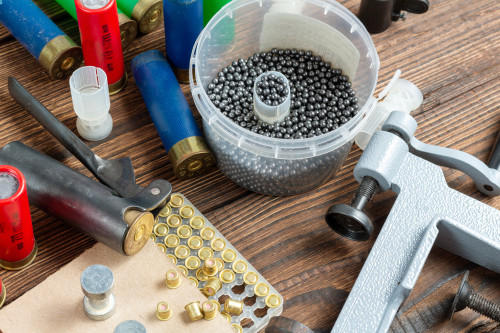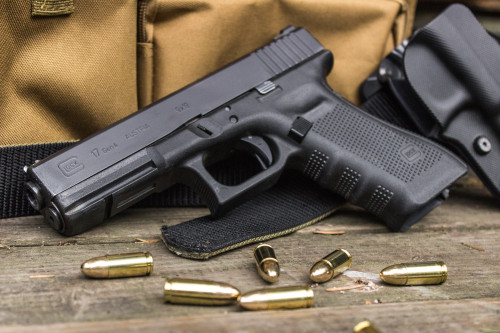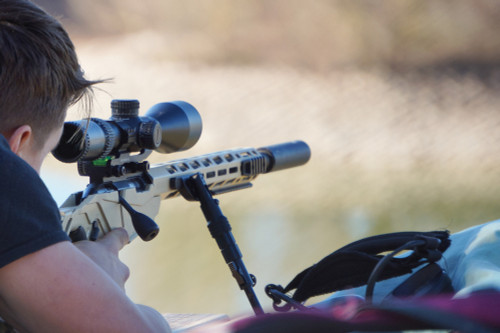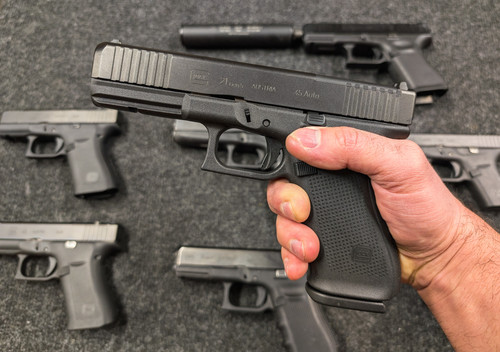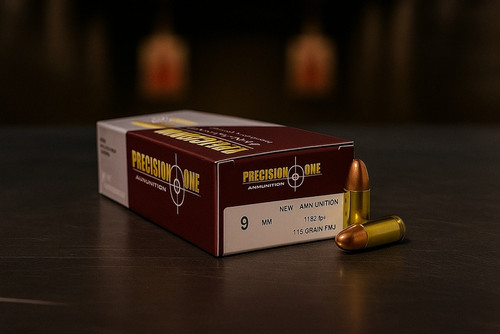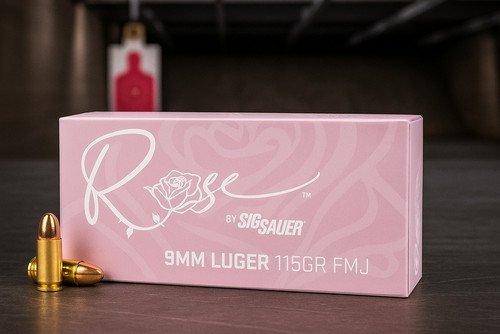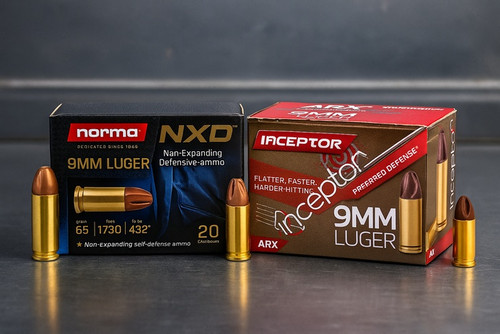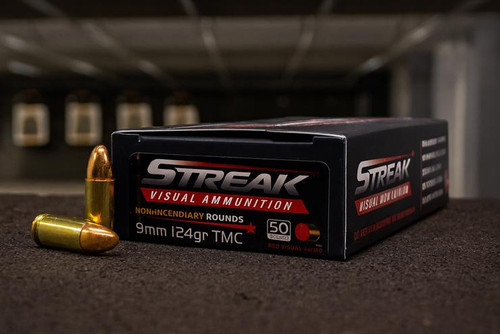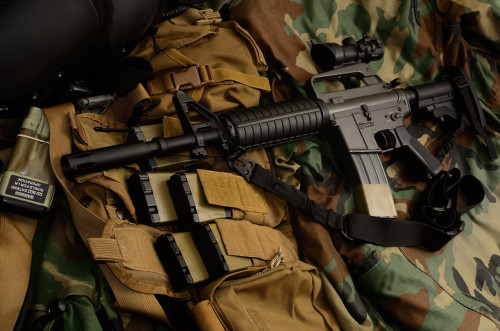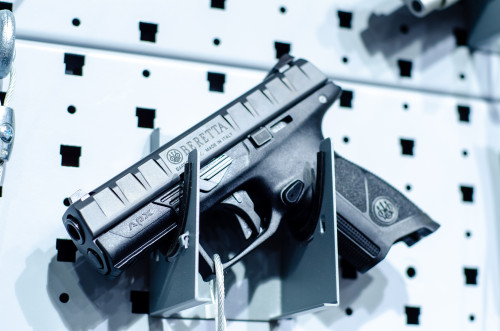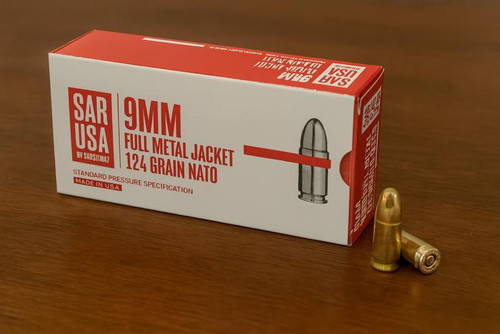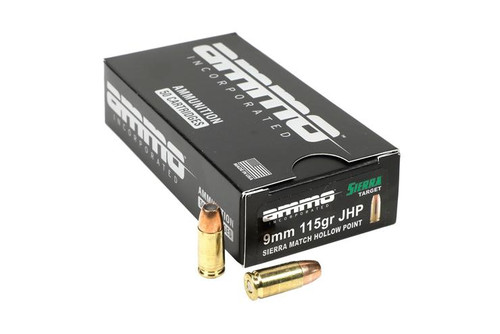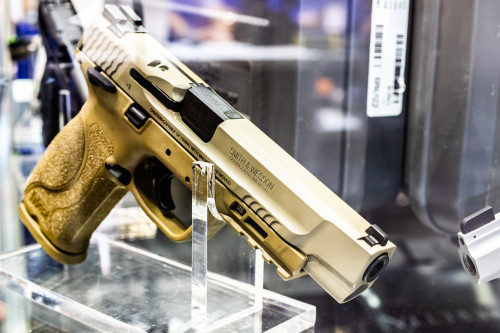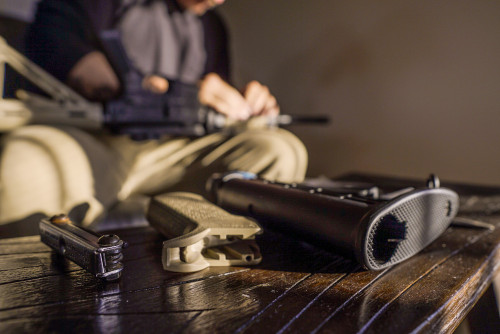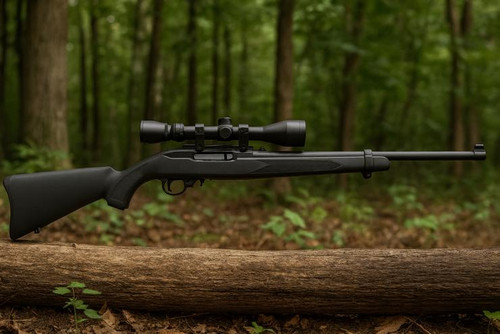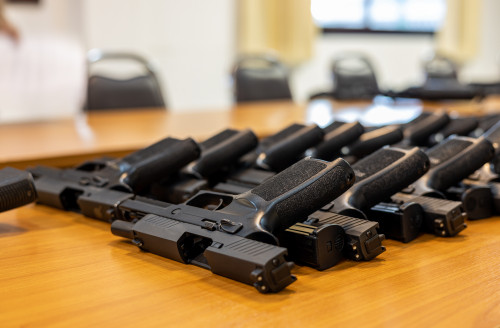Quick Answer
The right reloading press depends on your monthly round count, your calibers, and your budget. Bench-mounted single-stage presses shine for precise work and low volume. Turret presses give steady speed without piling on setup steps. Progressive presses deliver the highest output once dialed in. Top picks: Frankford Arsenal M-Press, Lee Classic Turret, Dillon RL550, Lee APP (Automatic Processing Press) — budget-friendly utility press for case prep, bullet sizing, and light single-stage tasks, and the Lee 310 for survival use.
Key Takeaways
- Match press type to volume, calibers, and budget.
- Setup quality determines safety, speed, and consistency.
- Toolhead/bushing systems speed caliber changes.
- Progressive presses demand strict QC to avoid errors.
- Use authoritative data; follow SAAMI specifications.
A veteran reloader shows a new shooter three benches: one single-stage, one turret, and one progressive. Same brass, same bullets—wildly different output. By day's end, the rookie understands why "best" depends on how much you shoot, not just brand names. The lesson? Start with your actual needs, then find the press to match.
The Quick List: Top Picks at a Glance
- Best Bench-Mounted Precision: Frankford Arsenal M-Press (Coaxial) — easy die swaps, excellent visibility; mind case lube so the universal clamping jaws don’t bind.
- Best Turret Workhorse: Lee Precision Classic Turret— rotating head per pull; faster than single-stage, more maintenance.
- Editor's Progressive Pick: Dillon Precision RL550— manual index, stellar build, flexible tooling; not auto-indexing.
- Most Adaptable Utility Press: Lee APP— budget friendly; great for case prep, sizing bullets, light single-stage tasks.
- Field/Survivalist Option: Lyman 310 (Ideal) Tool for survival use — ultra-portable, self-reliant reloading in a pinch.
How to Choose (Budget × Volume × Caliber)
Getting started with reloading means matching your needs to the right equipment. No single press works best for everyone.
First, be honest about your budget. Entry-level presses start under $200, mid-range options run $200-600, and high-end setups can exceed $600 – plus dies, shell plates, and powder measures.
Next, estimate your monthly volume. Reloading 50 precision rifle rounds differs dramatically from cranking out 1,000 pistol rounds for practice.
Your caliber mix matters too. Straight-wall pistol cases are easier than bottleneck rifle cases. Magnum cases need robust presses with extra leverage.
How often will you change calibers? Frequent swaps benefit from quick-change systems with toolheads or bushings that maintain settings.
Finally, consider your workspace. Some setups need substantial bench space, proper lighting, and even power sources for automated models.
Best Reloading Presses (Beginner To Advanced)
Dillon Precision RL550 (Manually Indexed Progressive Press)
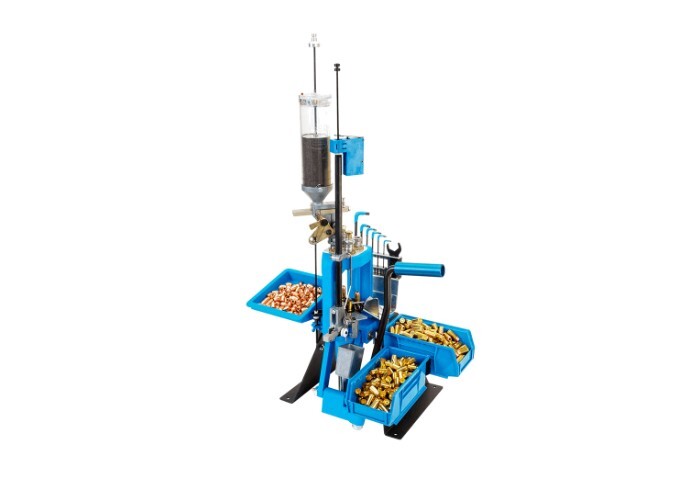
The Dillon RL550 stands as a favorite among serious reloaders who need volume but still want control. It lacks some bells and whistles found on newer XL750 or RL1100 models but includes everything needed for productive progressive reloading.
What sets this press apart is its manual indexing design. You advance the shell plate yourself. It gives extra moments to check each stage – perfect for those transitioning from simpler presses to higher output. This control reduces the cascade of errors that can happen with fully automatic progressives.
One huge advantage is the quick-change toolhead system. Once you've set up dies for a particular caliber, just swap the entire toolhead assembly instead of readjusting dies. For folks who reload multiple calibers, this feature alone saves hours of frustration.
A major plus is the quick-change toolhead system—set up dies once and swap toolheads per caliber. The RL550 runs dies from most brands and supports a wide upgrade ecosystem. (Use Dillon powder measures for best integration.) You can also run it like a single-stage when developing loads.
Price: Street price $709 (approx)
Features
- 4-station progressive layout; manual shellplate advance
- Dedicated toolheads for each caliber; repeatable die settings
- Compatible with pistol and rifle (.223/5.56, .308, etc.)
- Strong warranty and aftermarket support
Pros
- Excellent build quality and reliability
- Flexible—single-stage to progressive workflows on one frame
- Huge community, parts, and upgrade ecosystem
Cons
- Not auto-indexing—slower than XL750/RL1100
- Upgrades/toolheads increase overall spend
- Setup/primer system tuning required for peak throughput
Lee Precision Automatic Processing Press (APP)

The Lee Automatic Processing Press (APP) is a low-cost processing press. It excels at repetitive tasks—decapping, bullet sizing, bulge busting, light sizing, and similar operations—and is often used as a dedicated prep station alongside your main press.
Best with pistol brass and shorter rifle cases (e.g., .223/5.56, 300 BLK) for processing; not intended as a full progressive for complete cartridge assembly.
This press excels at case preparation – decapping, sizing, and other repetitive operations. Its design allows for continuous feeding of components. It makes tedious prep work much faster. Many reloaders add it as a second station specifically to handle these chores.
Size limits are important to note. The APP works beautifully with pistol cases and smaller rifle cases up to .223/5.56, but larger rifle cartridges exceed its capacity. For most handgun shooters, this isn't an issue, but big-bore rifle fans will need additional equipment.
Getting the most from the APP requires some patience and adjustment. The feeding mechanisms benefit from fine-tuning, but once dialed in, they run smoothly. For budget-conscious reloaders or those seeking a specialized prep station, the APP offers exceptional value.
Price: $89 (approx)
Features
- Modular feeds for decap/resize, bullet sizing, and more
- Configurable for multiple repetitive prep operations
- Compact footprint—fits tight benches
Pros
- Extremely budget-friendly; high utility per dollar
- Ideal dedicated prep station alongside a main press
- Fast for repetitive single operations
Cons
- Light-duty construction; not a primary progressive for volume
- Limited to shorter cases for full processes
- Requires patience to tune feeds and guides
Frankford Arsenal M-Press (Coaxial Reloading Press)

The Frankford Arsenal M-Press takes a fresh approach to the traditional single-stage press. Its coaxial design ensures perfect alignment between the die and case. It reduces the chance of damaged cases or inconsistent results.
What truly sets the M-Press apart are the removable die blocks. Once you've set a die, it stays in the block – just swap entire blocks between calibers without readjusting. This dramatically speeds up caliber changes compared to standard single-stage presses where dies must be reset each time.
The integrated LED lighting system proves surprisingly useful in practice. It illuminates the working area and it also makes it easier to spot issues with powder charges, case mouths, or primer seating. Small details like this show thoughtful design focused on real-world use.
One standout feature is the universal shell holder that accommodates various case diameters without swapping parts. It works with both rimmed and rimless cases from 9mm up to .45/70. Its universal clamping jaws handle rimmed and rimless cases from 9 mm up to .45-70, but poor lubrication can cause stuck cases that stress the jaws—keep cases properly lubed and inspect/tension per the manual.
Price: Street price $220–$300 (approx)
Features
- Coaxial linkage; smooth, straight ram motion
- Proprietary die bushing system for quick setup
- Works across wide caliber range (9mm to .45/70 noted)
Pros
- Excellent inspection visibility; easy QA
- Fast die swaps; consistent repeatability
- Versatile across pistol and rifle
Cons
- Universal shell holder is a known weak point if mis-lubed/brass sticks
- Costlier than some single-stage alternatives
- Proprietary bits add ecosystem lock-in
Lee Precision Classic Turret Press
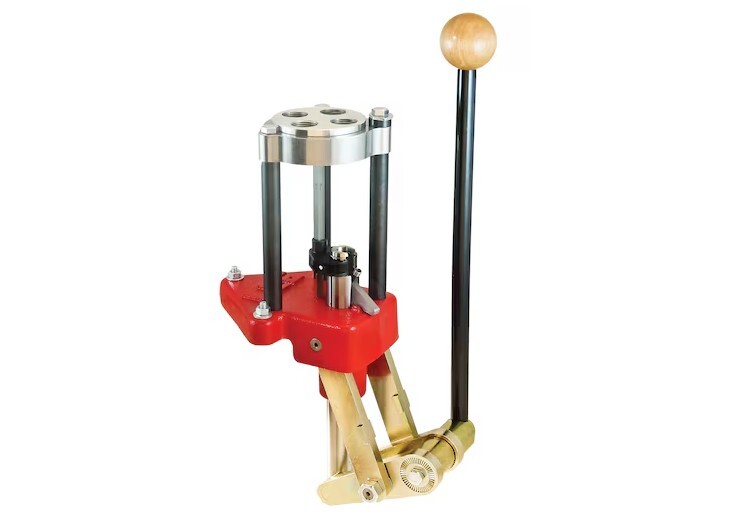
The Lee Precision Classic Turret Press offers a clever middle ground between slow single-stage presses and complex progressives. Its standout feature is how the tool head rotates automatically with each pull of the handle – no manual rotation needed.
This auto-rotation lets you complete one cartridge at a time, start-to-finish, without removing the case from the shell holder. Each pull advances to the next die in sequence, significantly boosting efficiency compared to single-stage operations.
Construction is cast iron with steel linkage on the Classic Turret (durable under regular use). The auto-index system uses inexpensive wear parts (e.g., the square ratchet) you can replace easily.
Setting up a powder measure can be challenging but worthwhile. With four stations, you can size/decap, expand/powder-through, seat, and crimp. On-press powder charging works well with Lee’s powder-through expanders for pistol; caliber changes are quick with extra turrets.
Price: Street price $148 (approx)
Features
- Caliber-specific turret heads; keep dies set per caliber
- The Classic Turret auto-indexes by default (you can disable it for manual rotation when desired).
- Supports on-press powder charging with compatible dies
Pros
- Good speed without progressive complexity
- Affordable with broad parts availability
- Easy caliber swaps via extra turrets
Cons
- Wear items and moving parts require maintenance/spares
- Some flex vs heavy cast presses
- Easy to rush and skip steps—pace matters
Lyman 310 ‘Ideal’ Tool (Hand Tool, Survivalist Pick)

The classic Lyman 310 (Ideal) Tool takes reloading back to basics in a pocketable, hand-operated package—no bench required.
This handheld tool resembles nutcrackers in operation – no bench mounting required, just hand pressure to resize cases and seat bullets.
Despite its simplicity, the Ideal Tool performs surprisingly well once you develop technique. It won't match bench-mounted presses for speed or consistency, but it delivers functional ammunition with minimal equipment. For preppers, hunters in remote areas, or those with zero bench space, it's a viable option.
The true survival advantage comes when paired with a bullet mold. Together, these tools enable completely self-sufficient ammunition production using scavenged materials. Lead, fired brass, and basic powder/primer supplies are all you need to create usable rounds far from civilization.
This press serves specific niches rather than everyday volume loading. It's perfect for a bug-out bag, as a demonstration tool for teaching reloading basics, or as an ultra-minimal solution for occasional needs. The caliber-specific design means you'll need separate tools for different cartridges.
Price: Typically $150–$250+ (kit/configuration dependent)
Features
- Caliber-specific dies in a compact "nutcracker" frame
- Minimal accessories needed vs full bench setup
- Works seated at a table, tailgate, or camp
Pros
- Ultra-portable; zero bench requirement
- Simple mechanical design; field-serviceable
- Teaches fundamentals and process discipline
Cons
- Very slow—not for high output
- Limited leverage; consistency requires skill
- Not ideal for large rifle cases or tight tolerances
Press Types Explained
Progressive Presses
Progressive presses offer the highest output potential but come with steeper learning curves. These machines perform multiple operations simultaneously on different cases as they move through the press.
The main appeal is throughput. Once set up properly, you can produce hundreds of rounds per hour. Each pull of the handle advances cases through the stages, with a completed round ejected at the end of the cycle.
The downside? More complexity means more potential failure points. When errors happen, they can multiply quickly. One missed powder charge might mean several affected rounds unless you catch it immediately.
Progressive presses come in three main variants, each with different levels of automation:
- Manual index (e.g., Dillon RL550) — you advance the shellplate, adding control. Auto-index (e.g., Dillon XL750) — the press advances automatically for higher throughput.
- Motorized— Production-level machines with electric drives. These are expensive options best suited for commercial operations.
Turret Presses
Turret presses offer a clever compromise in the reloading world. Unlike single-stage presses that require changing dies for each step, turret presses hold multiple dies in a rotating head.
This design lets you complete one cartridge from start to finish without removing it from the shell holder. Just rotate the turret to bring each die into position sequentially. Some turrets rotate manually, others automatically with each handle stroke.
The advantage is clear: greater efficiency without the full complexity of progressives. You still focus on one case at a time. It maintains quality control, but with much less die-swapping.
The tradeoffs come in durability and precision. More moving parts mean more potential maintenance points. Some turret designs may exhibit slight flex under pressure. It affects ultimate precision (though still fine for most shooting needs).
Single-Stage Presses (Bench-Mounted, Handheld, Specialty)
Single-stage presses represent the foundation of reloading. They perform one operation at a time, with one die position. This simplicity offers maximum control and precision. It makes them ideal for beginners or precision rifle loaders.
The primary drawback is speed – you'll need to change dies for each operation and handle cases multiple times. For small batches of precision ammunition, this isn't an issue. For high volume, it becomes tedious.
Single-stage presses come in several variants:
- Bench-mounted— The most common type, bolted to a workbench for stability. They handle everything from tiny .22 Hornet up to massive .50 BMG cases with proper dies.
- Handheld— Legacy designs like the Lyman 310 Tool that operate without a bench. These portable options sacrifice some leverage for convenience.
- Specialty kits— Ultra-compact systems like the Lee Loader that use separate tools for each operation. These pack small but require more manual skill.
Handloading can dramatically improve ballistic performance through consistency of manufacture and tailoring loads to specific purposes. As Wikipedia explains, "Handloading is a fundamental prerequisite for success where the most extreme accuracy is demanded, such as in rifle benchrest shooting."
Comparison Table
| Press Type | Best For | Speed | Setup Complexity | Caliber Changeover | Typical Cost | Common Pitfalls |
|---|---|---|---|---|---|---|
| Single-Stage | Precision, load development | Slow | Low | Moderate (with bushings) | Low–Mid | Time per round; frequent die swaps |
| Turret | Moderate volume | Medium | Medium | Easy (extra turrets) | Low–Mid | Wear on moving parts; head flex |
| Progressive (Manual) | High volume w/ control | High | Medium–High | Moderate (shell plates / toolheads) | Mid–High | Human error during indexing |
| Progressive (Auto / Motor) | Maximum throughput | Very High | High | Moderate–High | High–Very High | Troubleshooting during jams; more complex maintenance |
How a Reloading Press Works (Stage-by-Stage)
Depending on your setup, priming may occur on the downstroke at this station, at a separate priming station, or off-press—verify your press’ sequence.
Stage 1: Resize & Deprime (Full-Length for Mixed Brass)
This first stage returns fired brass to proper dimensions and removes the spent primer. The sizing die squeezes the case back to factory specs so it will chamber properly. Proper case lubrication is critical here – go in dry and you risk stuck cases that can damage equipment.
Many systems also seat a new primer during this stage, either as the ram returns down or in a separate operation. Getting primer seating depth consistent is crucial for reliable ignition.
Stage 2: Expand Case Mouth & Charge Powder
For pistol cartridges, this stage slightly flares the case mouth to accept bullets without shaving lead. Rifle cartridges may need neck tension adjustments instead.
This is also typically when powder is added. Whether using a separate powder measure or an on-press solution, this stage demands attention. Always verify charge weights against published data and watch for double-charges or missed charges.
Stage 3: Seat Bullet & Apply Initial Crimp
Here's where the bullet joins the case. The seating die pushes the bullet to the correct depth, measured as overall length (OAL). Getting this right affects both function and pressure – bullets seated too deep can cause dangerous pressure spikes.
Many seating dies also apply some form of crimp – either a roll crimp that turns the case mouth into the bullet or a taper crimp that squeezes it against the bullet body. The right crimp type depends on your cartridge and firearm.
Stage 4: Factory Crimp / Final QC
Some loading sequences add a separate crimping stage, especially for rounds that will feed through semi-automatics or withstand recoil in revolvers. Factory crimp dies provide this final touch.
This stage also serves as a final quality check. Look for proper bullet seating, consistent overall length, and clean, properly shaped cases before storage. Many reloaders wipe off residual case lube and label their ammunition with load data for future reference.
Safety, Setup & QC Tips
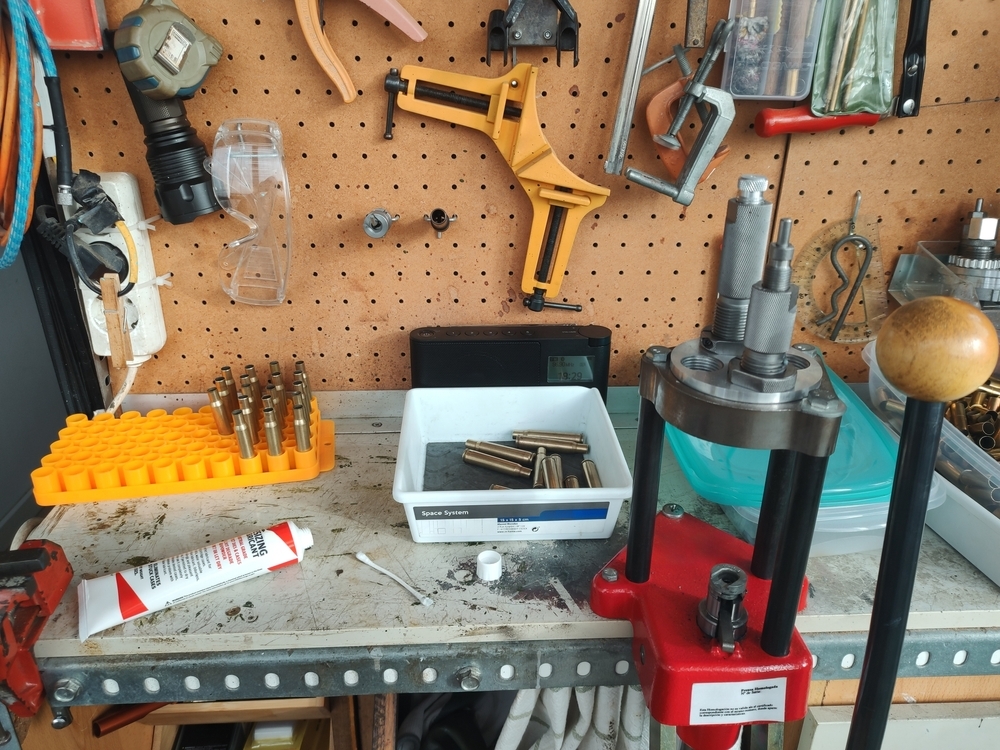
Safety comes first in reloading. These practices keep both you and your firearms protected:
Use current published load data from reputable sources that follow SAAMI standards. Old manuals may contain outdated or unsafe information.
Store primers and powder in separate locations, properly labeled. Never mix them or leave them in unmarked containers.
Set up strong, direct lighting over your work area. You should easily see powder levels in cases and spot any anomalies during the process.
Create detailed checklists for each caliber you reload. Document exact die positions, powder charges, and overall length specifications.
Implement regular quality checks. Sample-check your output every 25-50 rounds, measuring overall length, checking for proper primer seating, and verifying consistent appearance.
Double-check your powder type and charge before every session. Even experienced reloaders can grab the wrong container if distracted.
Recommendation Matrix (Pick Your Best Match)
Not sure which press suits your needs? This simplified guide matches common scenarios with appropriate equipment:
- Under $200, <200 rounds/month: A single-stage press or a Lee APP (processing press) for case prep + a basic single-stage for loading. Focus on fundamentals and consistency over speed.
- $200–$400, 200–500 rounds/month: The Lee Classic Turret with extra turret heads gives you good flexibility across calibers without overwhelming complexity or expense.
- $600+, 500+ rounds/month: Invest in a Dillon RL550 (manual index) with dedicated toolheads for each caliber you reload regularly. If volume is your priority, consider an auto-indexing press like the XL750.
- Precision rifle focus: Even with a budget for progressives, many precision shooters prefer single-stage or turret presses for the control they offer during load development.
- Prepper/emergency use: Consider the Lee hand tools or Lyman 310-style tools as supplements to your main setup. Their portability and independence from fixed infrastructure provide insurance against disruptions.
Conclusion
Picking the right reloading press is like choosing a car—it should match your needs, your budget, and where you plan to go. No single press fits everyone.
New to reloading? Avoid jumping straight to high-output progressive presses. Start with a single-stage or a turret to learn the basics. The careful habits you build now pay off later with any setup.
Already know the basics? When you upgrade, remember that fast caliber swaps often save more time than raw cycle speed. A press with quick toolhead changes may beat a slightly faster press that takes ages to adjust.
Whatever you choose, do not skimp on the supporting gear—good dies, accurate scales, and real case prep tools matter as much as the press. Bad parts or rushed measuring create trouble no press can fix. Take your time. Those extra minutes of checks help prevent damaged guns and risky ammo.
Reloading can reduce cost per round (especially for rifle/magnum) and lets you tailor ammo that runs best in your guns. Keep clear notes, mind the small details, and enjoy firing the rounds you built by hand. That quiet pride brings many reloaders back to the bench year after year.
For a deeper dive into cartridge performance and safe load development, check out our guides on the best long-range cartridges reviewed and .308 vs 7.62×51 NATO.
Frequently Asked Questions (FAQ)
Single-stage vs turret vs progressive—what should a beginner choose?
Start with a single-stage to learn fundamentals or jump to a turret if you want moderate speed with good visibility. Save progressives for when you're comfortable with the entire reloading process and need higher volume.
Do I need different presses for pistol and rifle?
No, one good-quality press can handle both. The differences come in the tooling (dies and shell holders) and your setup discipline. Some extra-large magnum rifle cases might benefit from presses with more leverage.
How fast is a progressive in real life?
After setup and with practiced rhythm, expect a few hundred rounds per hour. But there's a substantial learning curve, and you'll need frequent quality-check pauses until you build confidence in your setup.
Are universal shell holders reliable?
They're convenient but can be a weak point if tolerances drift or lubrication is inadequate. The Frankford M-Press shell holder works well but needs regular inspection and proper torque on its fasteners.
What's the safest way to verify powder charges?
Use a reliable scale to check your powder measure's throws at the start of each session. Add visual checks throughout your loading process, and randomly weigh completed rounds to confirm consistency.
About the Author
This article was written by the ProArmory writing team based on current research, including studies from reputable sources like the Journal of Military Science, Firearms News, and the National Shooting Sports Foundation. We also referenced trusted information from official defense publications and respected firearm authorities such as the ATF, NRA, and manufacturer manuals.
Disclaimer: The information provided in this article is for educational purposes only. Always follow manufacturer instructions for all reloading equipment and components. Reloading carries inherent risks—work carefully, follow current published data, and adhere to SAAMI specifications.




 Pro Armory Editorial Team
Pro Armory Editorial Team
